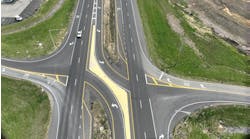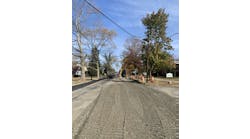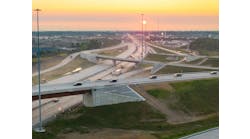Trump’s Tariffs and the Cost of Construction
By Gavin Jenkins, Senior Managing Editor
During a March budget meeting, Calvin Reed, the secretary of the Kansas Department of Transportation (KDOT), said tariffs could impact road and bridge construction projects in the state, according to KCUR 89.3.
Reed, who has worked as a bridge design engineer, bridge maintenance engineer and division of engineering and design director, said the average cost for construction is already 40% higher when compared to projections from 2020.
“If tariffs go up, if prices continue to go up, if revenues go down, if more money is transferred away, then there are projects that will likely have to be sacrificed,” said Reed, according to KCUR 89.3.
In 2024, KDOT spent $1.1 billion on 467 projects.
Yesterday, President Donald Trump announced tariffs on imports from about 90 nations, in addition to a 10% across-the-board tax applied to all imports to the U.S.
The tariffs will be additive, which means imports from countries like China will face the universal tariff of 10% on top of the specific reciprocal import levies targeting each nation.
China will be hit with a 34% tariff, plus the 20% tariff Trump imposed earlier this year.
"Reciprocal. That means they do it to us, and we do it to them," Trump said.
William Hauk, an associate professor of economics at the University of South Carolina, told KCUR 89.3 that he expects the tariffs to be problematic. He said that construction projects are going to cost more.
The Pacific Northwest chapter of the Associated General Contractors of America expressed concerns about the tariffs to KGW8.
Mike Salsgiver, the CEO of the AGC Oregon Columbia Chapter, explained to KGW8 that the industry expects to see the tariffs’ full effects within the next year.
"I think the biggest concern we have is just that the economy here in Oregon, and in Southwest Washington, is still feeling the effects of the pandemic,” Salsgiver said to KGW8. “So anything that disrupts things or creates instability or unpredictability is a concern. (The tariffs) will interrupt the ability for us to get the materials we need to actually do the work."
Imported steel and aluminum are vital materials for bridges, guardrails and other structural components for the road and bridge industry. Driving up costs on these materials would make projects more expensive.
Cement and asphalt are primarily produced domestically. However, they also could see price increases if trade restrictions disrupt supply chains.
Prepare for delays. Federal and state infrastructure projects often have fixed budgets, meaning higher material costs could lead to fewer projects getting approved or longer timelines due to cost overruns.
Contractors in the road and bridge industry might face bidding uncertainty, which will make it hard to price future projects accurately.
U.S. steel producers might benefit from reduced foreign competition. This has the potential to increase domestic production. However, domestic supply shortages or slow production ramp-ups could still limit availability and raise prices.
Will this result in fewer projects? Maybe. It might even lead to job losses for construction workers. Meanwhile, steel industry jobs could experience a boost if domestic production increases.
Last month, the American Society of Civil Engineers released the 2025 Report Card for America’s Infrastructure. The nation’s infrastructure has improved, but the bottom line from the report card was clear: more funding is needed.
If President Trump pairs these tariffs with a large infrastructure spending bill or with an extension of the Bipartisan Infrastructure Bill that President Biden passed, the negative impact on costs could be offset by increased funding.
But, if funding remains the same, fewer projects may move forward due to inflation.
The supply chain is the final point to consider. President Trump’s aggressive approach to China could affect the availability of machinery, tools and electronic components that are used each day on road and bridge construction sites in America.
Turning to other countries for supplies could take time, delaying road and bridge projects.
Sources: KCUR 89.3, KGW8, CBS News, Reuters, WhiteHouse.gov



